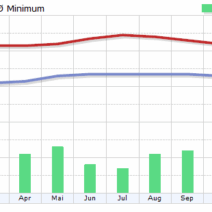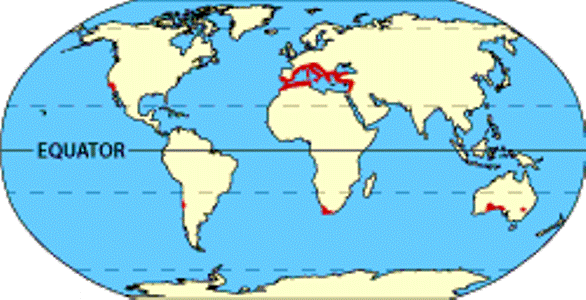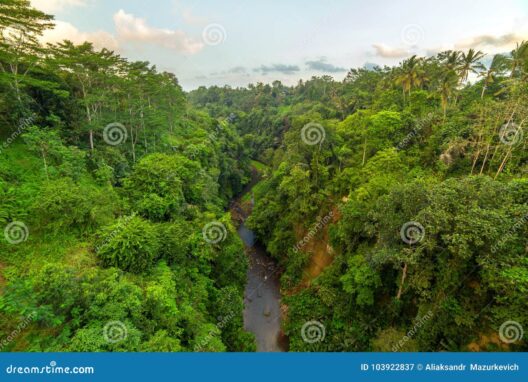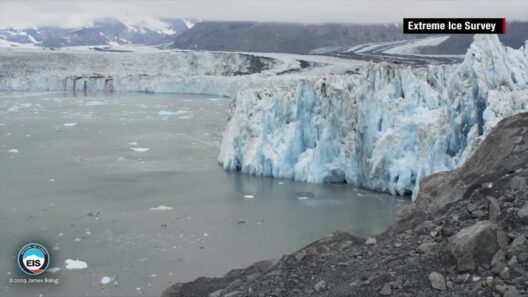The chaparral biome, characterized by arid summers and mild, wet winters, is a unique and vital ecological community found primarily in Mediterranean climates. These areas, while they may appear sparse at a glance, are teeming with diverse flora and fauna, adapted specifically to survive in such challenging conditions. However, as global temperatures rise and the climate continues to shift, the chaparral biome is under increasing threat from multiple fronts, including wildfires, drought, and habitat loss. It is imperative to understand the complexities of this biome and the role it plays in our global ecosystem.
The chaparral biome is primarily located in regions such as California, the Mediterranean Basin, parts of Australia, and South Africa. It consists of tough, drought-resistant shrubs, small trees, and herbaceous plants that have adapted to periodic disturbances, especially fires. The unique arrangements of these vegetation types create a mosaic of habitats, contributing to high levels of biodiversity. Notably, many of the plants found in chaparral ecosystems have evolved characteristics conducive to fire resilience, such as thick bark, deep roots, and seed pods that require fire to germinate.
However, the delicate balance of the chaparral ecosystem is increasingly jeopardized by climate change. The rise in global temperatures is intensifying the frequency and severity of droughts, restricting water availability during critical growth periods. This environmental stressor not only weakens plant health but also heightens the risk of wildfires. The relationship between drought conditions and wildfire susceptibility cannot be overstated; prolonged dry spells create tinderbox conditions that facilitate the ignition and rapid spread of fires. As temperatures continue to rise, areas that were once resilient may become hotspots for devastating blazes, leading to long-term ecological changes.
Wildfires, while a natural component of the chaparral’s life cycle, are becoming increasingly destructive. Historically, many plants in these ecosystems have relied on fire to rejuvenate the landscape. However, with climate change introducing unnaturally intense and frequent fires, the regenerative capabilities of chaparral flora may be undermined. The intertwining of invasive species further complicates this challenge. Non-native plants often thrive in the wake of wildfires, outcompeting native species and altering the composition of the ecosystem. This shift not only reduces biodiversity but creates a feedback loop that exacerbates fire risks in future seasons.
Moreover, the impact of climate change extends beyond wildfires. Changes in precipitation patterns and an increase in extreme weather events have led to unpredictable and potentially destructive oscillations within the ecosystem. Some areas may experience torrential rains leading to erosion and habitat degradation, while others face sustained dry periods. Such abrupt shifts not only disrupt the delicate balance of the chaparral biome but also jeopardize the many species—both flora and fauna—that depend on this environment for survival.
In addition to environmental stresses, anthropogenic factors further accelerate the degradation of chaparral ecosystems. Urbanization, agricultural expansion, and land-use changes encroach on these unique spaces, fragmenting habitats and introducing pollution and invasive species. As human populations expand, the demand for land and resources has led to a relentless push into vulnerable areas. The resulting habitat loss and fragmentation has profound implications for biodiversity, limiting the ability of various species to migrate and adapt to changing environmental conditions.
Conservation efforts aimed at safeguarding the chaparral biome are crucial. Establishing protected areas and managing wildlands responsibly can help mitigate some of the risks associated with climate change and habitat loss. Practices such as controlled burns can simulate natural fire cycles and help maintain the health of the ecosystem. Furthermore, restoration projects that focus on removing invasive species and reintroducing native plants are essential to preserving the integrity of chaparral communities. Public awareness and education about the importance of these ecosystems can spur action, fostering a communal effort to protect and restore the chaparral.
Individuals can also play a pivotal role in conservation through their choices and lifestyle changes. Supporting sustainable land management practices, reducing carbon footprints, and participating in local conservation initiatives can all contribute to the preservation of chaparral ecosystems. Moreover, advocating for policies that address climate change at local, national, and global levels is imperative in confronting the threats posed to these biomes.
In summation, the chaparral biome represents a striking example of nature’s resilience and vulnerability. While it has adeptly evolved to thrive amidst fire and drought, the accelerating impacts of climate change present unprecedented challenges. Through a combination of conservation efforts, sustainable practices, and public awareness, there is still hope for this unique ecosystem. The fate of the chaparral biome ultimately serves as a microcosm for the broader environmental struggles we face globally, highlighting the need for immediate and resolute action to safeguard our planet’s precious ecosystems.








